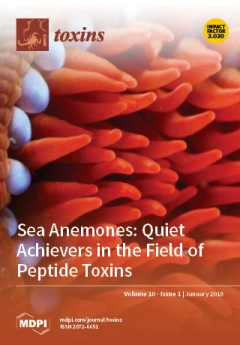The food-borne mycotoxin aflatoxin B
1 (AFB
1) poses a significant risk to poultry, which are highly susceptible to its hepatotoxic effects. Domesticated turkeys (
Meleagris gallopavo) are especially sensitive, whereas wild turkeys (
M. g. silvestris) are more resistant.
[...] Read more.
The food-borne mycotoxin aflatoxin B
1 (AFB
1) poses a significant risk to poultry, which are highly susceptible to its hepatotoxic effects. Domesticated turkeys (
Meleagris gallopavo) are especially sensitive, whereas wild turkeys (
M. g. silvestris) are more resistant. AFB
1 toxicity entails bioactivation by hepatic cytochrome P450s to the electrophilic exo-AFB
1-8,9-epoxide (AFBO). Domesticated turkeys lack functional hepatic GST-mediated detoxification of AFBO, and this is largely responsible for the differences in resistance between turkey types. This study was designed to characterize transcriptional changes induced in turkey livers by AFB
1, and to contrast the response of domesticated (susceptible) and wild (more resistant) birds. Gene expression responses to AFB
1 were examined using RNA-sequencing. Statistically significant differences in gene expression were observed among treatment groups and between turkey types. Expression analysis identified 4621 genes with significant differential expression (DE) in AFB
1-treated birds compared to controls. Characterization of DE transcripts revealed genes dis-regulated in response to toxic insult with significant association of Phase I and Phase II genes and others important in cellular regulation, modulation of apoptosis, and inflammatory responses. Constitutive expression of
GSTA3 was significantly higher in wild birds and was significantly higher in AFB
1-treated birds when compared to controls for both genetic groups. This pattern was also observed by qRT-PCR in other wild and domesticated turkey strains. Results of this study emphasize the differential response of these genetically distinct birds, and identify genes and pathways that are differentially altered in aflatoxicosis.
Full article






